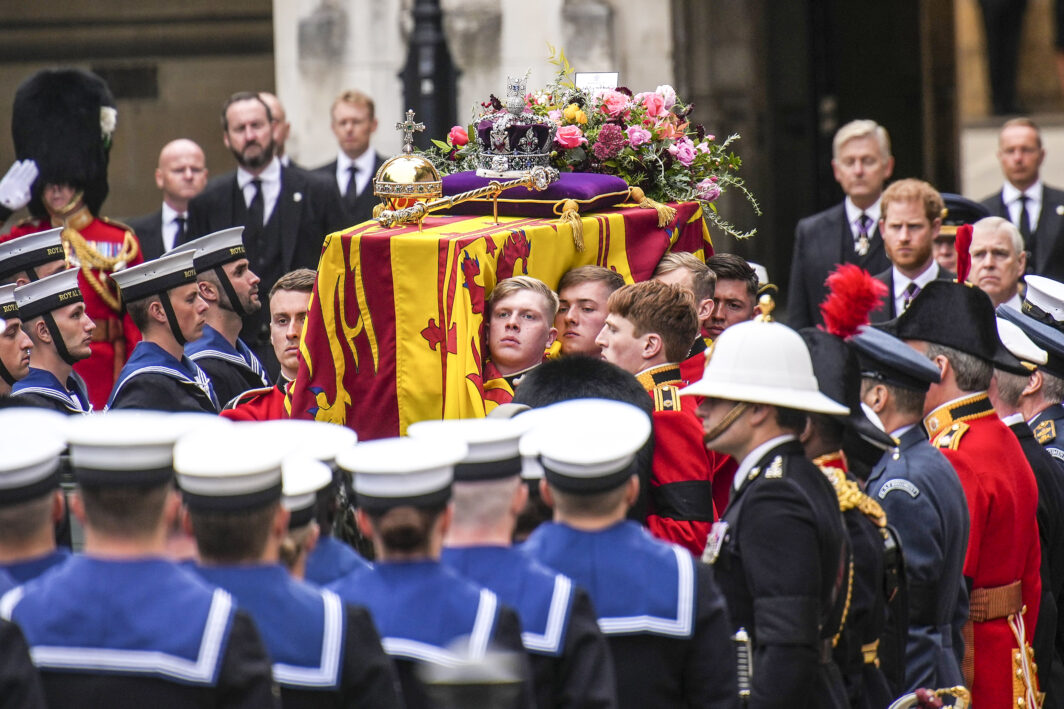Liberal Judaism CEO Rabbi Charley Baginsky has written for The Jewish News on the significance of attending Monday’s state funeral for Queen Elizabeth II. You can read her piece below and on the Jewish News website:
It was a very surreal moment when, last Sunday, my phone rang and I was asked whether I would be able to attend the funeral of Her Majesty Queen Elizabeth II on behalf of Liberal Judaism.
It is not the sort of invitation that one has to spend much time thinking whether to accept, but honestly nothing could have prepared me for the reality.
After years of leading funerals, I have to admit I was more nervous than I have been for any since being a student rabbi… and I did not even have to officiate!
The nerves came from the weight of responsibility I felt at being at such a moment in history, not only for myself but for thousands of our Liberal congregants and perhaps even many others for whom the religious representation of the congregation was important.
The Chief Rabbi of the United Synagogue does a wonderful job as a communal figurehead, but it’s also important that Progressive Jews and communities personally feel part of events such as this – and therefore the diverse representation which both Buckingham Palace and Lambeth Palace have become known for is an important addition.
The number of messages I have received from people who felt like they were able to be a part of the ceremony in a different way because I was there has been staggering.
The funeral was, from start to finish, an incredible mix of the universal and the particular; different people from many different places sat side by side, the cross of political views and roles made sitting waiting for the funeral to start a fascinating opportunity just to listen to conversations. On the other hand, we were all so very aware that this was a moment of mourning for a much-beloved and admired monarch.
In every Shabbat service, across all the Jewish denominations, we hear the prayer for the Royal Family. This Shabbat and last Shabbat we felt that poignancy of being in the liminal state between two moments, the weight of that history filled the room. But there were also the quiet individual stories, the tears in the eyes of the Imam next to me or the police officer who held the gate as we left.
The service too was so very much a Christian one, the readings and rituals very much reflective of the Queen’s strong personal faith, but also the gathering of all faiths and none was a strong reminder of her ecumenical beliefs in providing a safe umbrella for other religions.
I entered the funeral with Baroness (Tanni) Grey-Thompson. We had met at the recent Munich commemoration and it was a fascinating opportunity to hear her reflections on the Queen and important thoughts on inclusion.
I left with senior police and fire officials as well as Angela Rayner MP and Rabbi Kathleen Middleton, who represented The Movement for Reform Judaism at the funeral. We were a strange small group standing outside on an empty street, blocked as President Joe Biden’s enormous car was allowed to leave in private. But in the other direction the last members of the parade were making their way through the armed forces parade, all of us could not move – not because of the armoured car, but because of the draw to accompany the Queen on this last moment of her journey.
Here again was this profound particular and universal, the very large story of the end of the life of possibly the greatest Queen of England and the very small story of a few people caught in the poignancy of having a chance to accompany her in her final steps.
Share this Post

